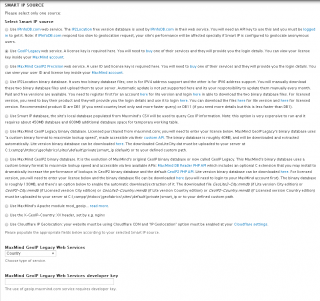


If you have an IP address and would like to find where it is and get some details about it, whether from an individual, a company or a website, here's a selection of.It is only capable of looking up the IP of a client that.īusiness and pleasure by Dick and Jill Miller of Miller Microcomputer Services. New Apache Module Available: This module is for the Geo. IP Legacy Apache Module « Maxmind Developer Site. Now, we're ready to pull them into Wireshark.Ģ) Open Edit->Preferences in Wireshark, select Name Resolution, and click the "Edit" button next to GeoIP database directories click New in the resulting dialog and add the directory you created in step 1.Geo. The databases can be (and should be) read-only you won't be adding any data. On my Linux systems, I created the /usr/local/geoip directory for this purpose on Windows systems, I use a \geoip subdirectory under the Wireshark installation directory. Now it's time to make Wireshark GeoIP-aware:ġ) Once you've downloaded the GeoIP databases, unzip them to a permanent home. The MaxMind databases are updated on a monthly basis if you like the results of this exercise, you'll need to set up a process to handle monthly updates. MaxMind provides free GeoLite databases for IPv4 and IPv6 city, country and autonomous system numbers (ASNs) you'll want to download the binary versions, not the CSV editions. You can download free GeoLite versions of current GeoIP databases from MaxMind. The marraige of Wireshark's analysis and GeoIP's provider identification produces some powerful analysis capabilities. Geolocation can be been integrated with DNS (or, at least, BIND implementations of DNS), the Apache web server, and any number of other applications, including (as of version 1.1.2) our favorite network tool - Wireshark. The answer (or, at least, a good start toward an answer) lies in geolocation - the association of IP address spaces with their geographic and/or corporate assignments. What, then, is the enterprise network analyst to do? At the same time, we're dealing with an increasing number of telecommuters, those "work from home" people who are at the mercy of their ISP. In this respect, troubleshooting issues involving mobile devices can be quite the challenge. No longer can we perform true end-to-end capture or analysis of network data what was the "last mile" is now an indeterminate path through any number of relatively impenetrable mobile networks.

As enterprises move an ever-growing list of services into the mobile space, it becomes essential to understand the limitations of the mobile network infrastructure.


 0 kommentar(er)
0 kommentar(er)
